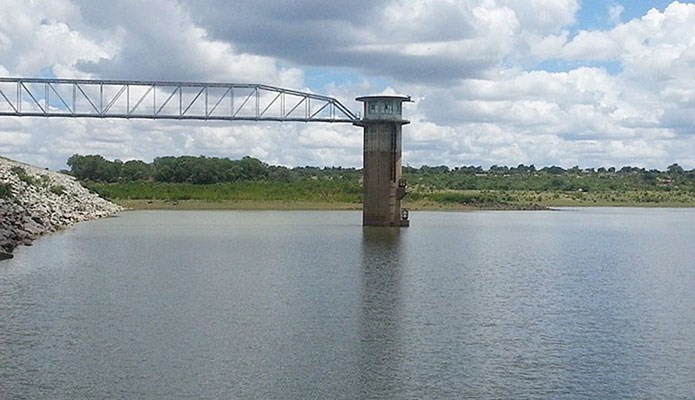
DESCENDANT of the Ndebele monarch, King Lobengula, Prince Peter Zwide Khumalo yesterday slammed plans by Bulawayo City Council (BCC) to pump the heavily-polluted Khami Dam water into households to alleviate supply problems.
BY SHARON SIBINDI
Khumalo said health experts had already condemned the sewage and chemical-tainted water and ruled out its use for domestic consumption.
The local authority recently introduced a 144-hour water-rationing scheme after decommissioning three of its supply dams.
“The Bulawayo community read with shock in one of the papers about the city’s proposal to use Khami Dam water to supplement the city’s potable water supply,” he said.
“The City of Harare’s current water quality woes are a result of a similar decision that was made around the end of the 1980s to supplement that city’s potable water supply with reclaimed sewage water. Having been at Criterion Waterworks Laboratory at that time, I was privileged with information that we provided through our then city chief chemist the late Sam Sango to the then Harare City Council chief chemist, Mkhudu.”
Khumalo said Bulawayo Criterion Laboratory provided technical support then, but the programme was not feasible and unlikely to provide healthy and clean water to Harare.
“After a series of tests of Khami Dam water, it was recommended that it would never be suitable for public consumption because of its high chemical, organic and microbiological pollution load which was not possible to bring down to World Health Organisation (WHO) standards required for potable water,” he said.
- Chamisa under fire over US$120K donation
- Mavhunga puts DeMbare into Chibuku quarterfinals
- Pension funds bet on Cabora Bassa oilfields
- Councils defy govt fire tender directive
Keep Reading
He said the Khami Dam water had high sewage content coming through public water courses such as Khami and Phekiwe rivers and was abused by the Rhodesian security system.
“That makes it a hazard to public health. The water has very high chemical oxygen demand (COD) and biological oxygen demand (BOD) and has very high suspended organic waste material of faecal content,” Khumalo said.
“The E-COLI bacterial levels would be difficult to reduce to acceptable potable water requirements. Cholera epidemics are thus a possibility in future. The ordinary use of a combination of ammonia and chlorine (chloroamines) to kill the bacteria would be very expensive.
Chemicals for settling the suspended organic and inorganic wastes as both phosphate based and polyelectrolytes sludge would cost the city and the ordinary citizen an arm a leg.”
“Quantities of the activated carbon, to reduce odours and regenerate a clean clear appearance of the water is also very costly as these chemicals are imported.”
He added that the Bulawayo city fathers should inform the public what methods of treatment they proposed to use to deal with high BOD/COD, E-COLI, suspended solids, odours and water colour to meet WHO standards.
He said BCC was currently failing to give ratepayers clean and odourless water due to low water levels in the dams and the current treatment regime
“If the 1988/1989 results retention period has not expired and Criterion analysis results are still available, then a comparison can be done and informed decisions made. The Khami Dam water programme was abandoned and the Nyamandlovu Aquifer water was taken on as a better alternative.
The aquifer water, however, could not be imbibed in its raw form because of its high mineral chemical load,” he said.
Meanwhile, Bulawayo has stopped pumping water from Inyankuni Dam due to an electrical fault, town clerk Christopher Dube said in a notice.
“The City of Bulawayo would like to advise members of the public that the electricity transformer on the power line that feeds Inyankuni was damaged by a power-surge, leading to cessation of power supply to the dam booster station,” Dube said.
Dube said Inyankuni was one of the remaining three operational dams and abstraction of raw water from the dam would only resume after the replacement of the transformer.
“This will reduce the amount of raw water available for treatment leading to interruption of water supplies until a replacement transformer is sourced by Zesa,” he said.











